Wartime Heritage
ASSOCIATION

May 4th is Remembrance Day in the Netherlands. On
this day in 2017, Maarten Boersen, in a Church Service in
Hoogland, the Netherlands, shared his memory of a story
told to him by his father in 1976 or 1977 when he was ten
or eleven years of age.
The photo of the button was projected during the
ceremony.

copyright © Wartime Heritage Association
Website hosting courtesy of Register.com - a web.com company
The Button
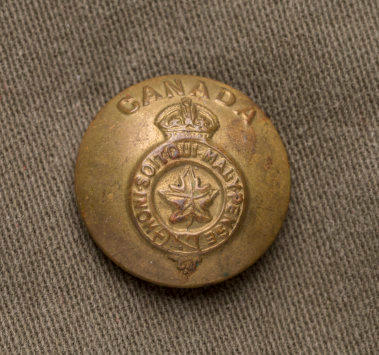
The Button
Maarten watches as his mother is making clothes on the sewing machine. He’s a bit bored. Suddenly, he sees a
big, shiny button in the button box. It has a text : CANADA and a leaf.
Mama, he asks, where has this button come here?
I don’t know, she replies, you should ask your dad.
That evening his father tells the following story:
We lived in the Parish house where my father, your granddad, was the keeper. In the spring of 1945, I was
eleven years old. We were forced to hide in the cellar because outside there were fights between the Canadian
liberators and the Germans.
The Canadians brought their wounded to the kitchen of our house to care for them. Your grandfather left the
cellar to help them. He gave a poached egg to a heavily wounded soldier. Regrettably, two Canadians died in that
kitchen that night.
This Button belongs to a Canadian Uniform jacket. I found it in our house after the war.
These soldiers came from the Eastern Provinces of Canada. They were young men who died some 6.000 km from
home for our freedom.
The date was April 22, 1945. A week later Hitler was dead, and two weeks later the war ended.
Recently, I found the names of these soldiers:
Edmond Levesque, 21 years old
James Jamieson, 26 years old
De Knoop
Maarten kijkt mee als zijn moeder kleren naait op de naaimachine. Hij verveelt zich een beetje. Opeens ziet hij
in de knopendoos een grote, glimmende knoop. Er staat een tekst op: CANADA en ook een boomblad.
Mama, vraagt Maarten, hoe komt die knoop hier terecht?
Dat weet ik niet, antwoordt zij, vraag dat maar aan je vader.
Die avond vertelt zijn vader het volgende verhaal.
Wij woonden in het parochiehuis want mijn vader, jouw opa was daar de beheerder.
In het voorjaar van 1945 was ik 11 jaar oud.
Wij moesten schuilen in de kelder, want buiten waren gevechten tussen de Canadezen en de Duitsers.
De Canadezen brachten hun gewonden naar de keuken van ons huis om ze daar te verzorgen. Jouw opa ging uit
de kelder om ze te helpen, hij gaf een geklutst ei aan een zwaargewonde soldaat. Helaas zijn er die nacht twee
Canadezen overleden in die keuken.
Deze knoop is van een Canadees uniformjasje. Ik heb hem na de oorlog gevonden in Concordia.
Die soldaten kwamen uit het oosten van Canada. Het waren jonge jongens, zij zijn meer dan 6.000 kilometer van
huis gestorven voor onze vrijheid.
Het was 22 april 1945. Een week later was Hitler dood, en twee weken later was de oorlog afgelopen.
Ik heb onlangs de namen gevonden van deze soldaten:
Edmond Levesque 21 jaar oud
James Jamieson 26 jaar oud
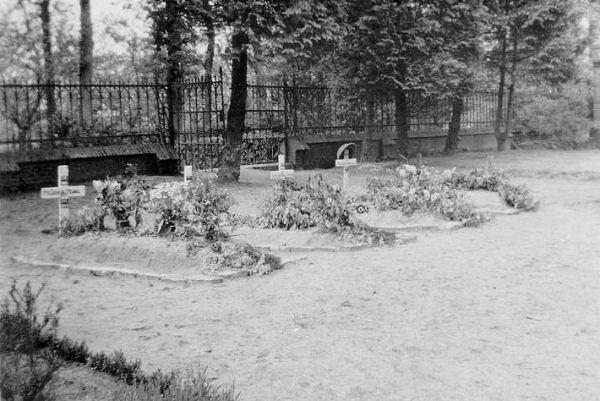
Edmond Levesque's temporary
grave is to the left of James
Jamieson's grave (it has the
helmet on it)
Lance Corporal Edmond Levesque was the son of Rene and Anna Levesque. He
was one of eight children. He married Lea Marie Elizabeth D’Eon of West Pubnico,
Yarmouth Co., Nova Scotia on March 2, 1943 at Wolfville, NS. The couple met
while he was stationed at Camp Aldershot. He was attached to the Administrative
Wing #14 ITG Aldershot until he departed for overseas on August 27, 1943. His
wife then returned to West Pubnico and his daughter Clodette Marie was born
there on February 2, 1944. Edmond disembarked in England on September 1, 1943
and was assigned to the Carleton and York Regiment, R.C.I.C.
He served in England until May 25, 1944 and in Italy between March 17, 1945. He
disembarked in France on March 20, 1945 and served Northwest Europe until his
death. He was killed in action on April 22, 1945 while serving in the Netherlands.
Remembrance page

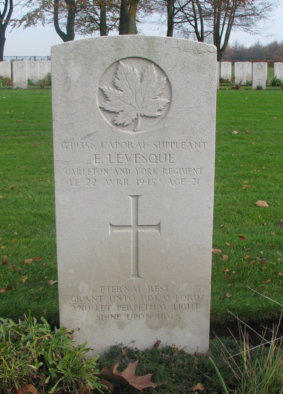
Private James Jamieson was born in Toronto, Ontario on May 18, 1918, the
son of James and Rebecca Jamieson of Acton, Ontario. He was married to Ruth
May Jamieson and had two children, Robert George and Marlene June Jamieson.
Prior to his enlistment he was employed as a silk knitter with Rennie Industries
Ltd.
He served in Canada from March 2, 1943 to September 13, 1943, in the United
Kingdom from September 14, 1943 to March 3, 1944, in Italy from March 26,
1944 to November 16, 1944 and in Northwest Europe from November 17 to April
22, 1945. He was killed in action while serving in the Netherlands on April 22,
1945, aged 26.

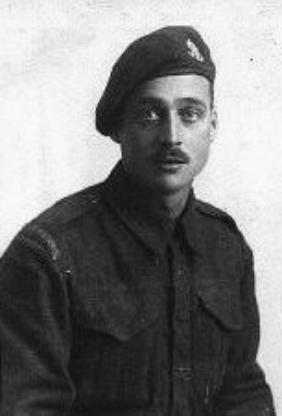
Private William James Mennie was born in New Hills, Alberdeen, Scotland on
February 2, 1920, the son of William and Jessie Mennie. He was the husband of
Mercedes C. Mennie, of Pennfield Ridge, New Brunswick.
He enlisted in St. John, New Brunswick on February 13, 1939 and was stationed
with the Anti-Aircraft Battery. He trained in St. John until September 27, 1941
when he was assigned to the the 7th Anti-Air Battery and transferred to Gander in
Newfoundland where he also served with the Royal Canadian Air Force.
In 1943, he served in Bedford, Windsor and Halifax, Nova Scotia and in Utopia,
New Brunswick with Anti-Aircraft Reinforcement.
He departed for overseas on November 25, 1944 and arrived in England on
December 5. He served in Northwest Europe and was taken on strength with the
Carleton and York Regiment. He served with the Regiment for eighteen days
before his death on April 20, 1945 aged 25.
He was one of the four Carleton and York Regiment soldiers temporarily buried in
the cemetery of the Parish church in Hoogland, The Netherlands.
Died: April 20, 1945
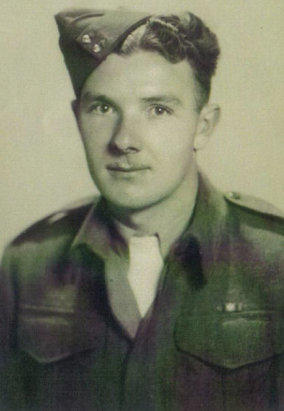

Private Lawrence Howard Thompson was born February 18, 1918, the
son of Robert and Mabel Thompson, of Flesherton, Ontario.
He enlisted on October 5, 1942 in Toronto, Ontario and served in Canada
until November 1944. He arrived in England on November 28, 1944. He
served in Northwest Europe and was taken on strength with the Carleton
and York Regiment April 3, 1945. He was killed in action on April 24,
1945 aged 27.
He was one of the four Carleton and York Regiment soldiers temporarily
buried in the cemetery of the Parish church in Hoogland, The Netherlands.
Died: April 24, 1945

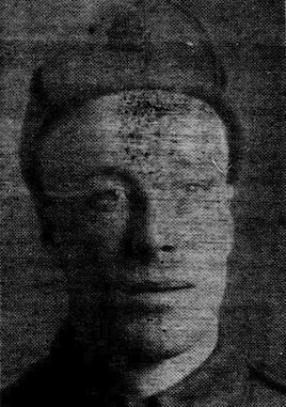
These four Carleton and York Regiment soldiers were re-buried in the Groesbeek Canadian War Cemetery, in the
Netherlands
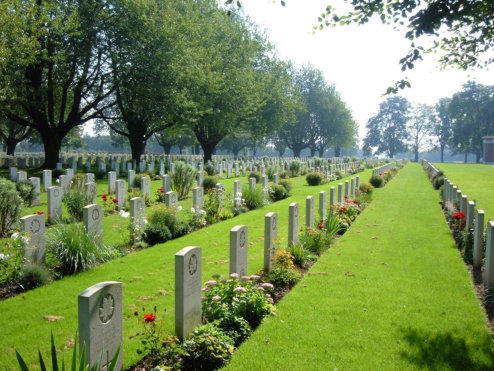


- World War I - Menu
- WWI Stories and Articles
- Photos - Yarmouth Soldiers
- Selection of World War I Songs
- WWI Casualties of Yarmouth, NS
- Those Who Served - Yarmouth, NS
- WWI Casualties Digby Co. NS
- WWI Casualties Shelburne Co. NS
- Merchant Mariners (1915) Yarmouth, NS
- Canadian Forestry Corps - Non Yarmouth Birth/Residence Enlistments
- US Draft Registry - Yarmouth NS Born


- World War II - Menu
- WWII Stories and Articles
- Telegraphist Air Gunners
- WWII Casualties of Nova Scotia
- US Casualties with NS Connection
- Far East/Pacific Casualties with NS Connection
- Merchant Navy Casualties Nova Scotia
- Nova Scotia WWII Casualties Holten Canadian War Cemetery
- D-Day Casualties - Nova Scotia
- CANLOAN Program Casualties - Nova Scotia
- Battle of the Bulge Casualties - Nova Scotia
- WWII Casualties Yarmouth NS
- Yarmouth Casualties - RCAF RAF Canadian Army WWII
- Yarmouth Co., Marrages WWII
- Casualties Non-Born/Residents with Connection to Yarmouth Co., Nova Scotia.
- WWII Casualties Digby Co., NS
- Non-Nova Scotian WWII Casualties Buried in Nova Scotia
- WWII RCAF Casualties Aged 16-18
- Brothers/Sisters Who Served - World War II













